“The Last Serb in Croatia”
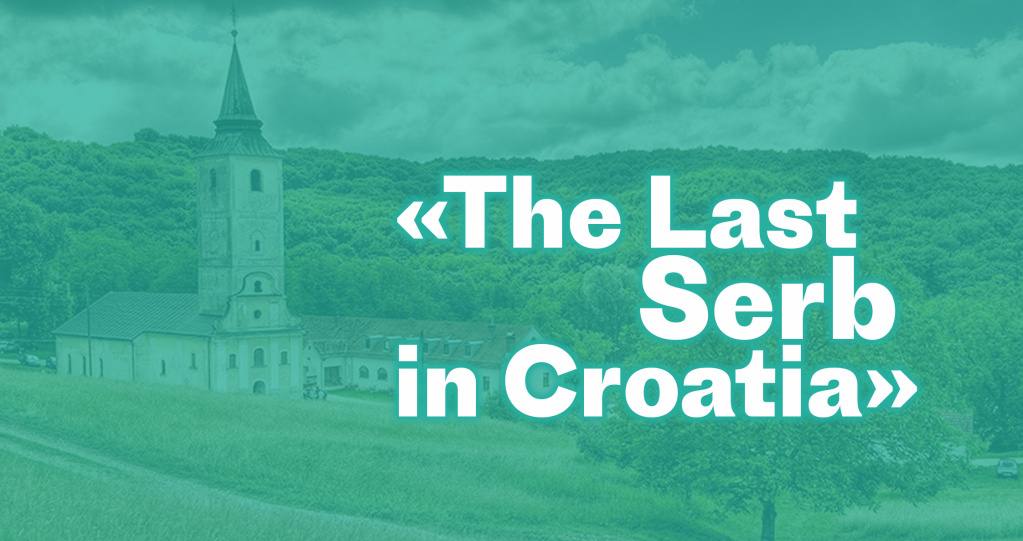 Vladimir Putyatin, Candidate of History, Associate Professor, Head of the Department of the History of Southern and Western Slavs, Faculty of History of Moscow State University
Vladimir Putyatin, Candidate of History, Associate Professor, Head of the Department of the History of Southern and Western Slavs, Faculty of History of Moscow State University
In 2019, “The Last Serb in Croatia,” a comedy film, was on in Zagreb and in Belgrade. The film shows a war waging in the world. The price of water is higher than the price of oil. Croatia is broke and on top of everything else an epidemic disease breaks out. Only the Serbs have got the medicine against it, and the Croats are confronted by an existential dilemma: either not to survive as such and turn into zombies, or turn to the Serbs for help. The film is absolutely apolitical, but uncomplicated as is its plot, the problem of the Serbia-Croatia relations, extremely important for the fate of the Balkans as a whole, arises clearly from it.
The Serbs have lived on the territory of modern Croatia since the Early Middle Ages. The first mention of the Serbs in Srem, Slavonija and Dalmatia dates back to the 7th century a.d. However, back then the Serbian population was a majority only in the southern lands of Dalmatia, where the Serbs founded some of principalities – Pagania, Travunija and Zahumlje. St. Sava, the first Archbishop of Serbia, establishing holy Orthodoxy and bringing church affairs to order founded the new diocese of Hum with the monastery of the Holy Mother of God in that city as the chair of the bishop after the city of Ston had been left by Catholic bishops. The Krupa, Krka and Dragović Serbian monasteries that were founded in the first half of the 14th century have indeed become a real stronghold of Orthodoxy in Dalmatia.
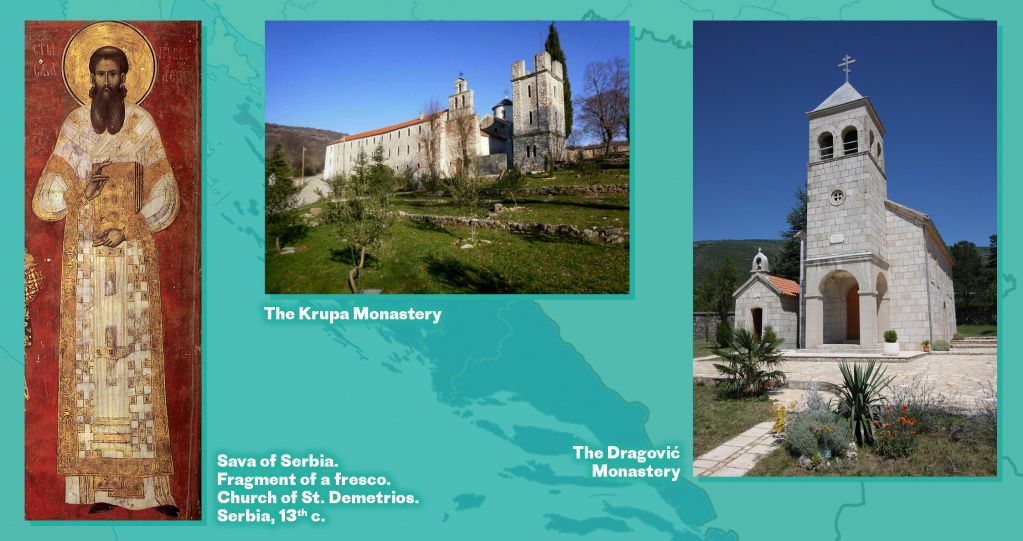
The Croats, unlike the Serbs, lost their independence quite early when in 1202 they became part of Hungary, having signed a union agreement with it. According to the statutes of the papal legate for Poland and Hungary of 1279, Orthodox clergymen could not buy or build churches without the permission of the Catholic bishop, while the Catholics were forbidden to attend divine services in Orthodox churches. However, the situation changed under the imminent Islamic threat, which made Christians unite in the face of common danger.
After the successful conquest of Constantinople in 1453 Ottoman sultan Mehmed II addressing the ambassadors, reportedly said: Tell your rulers that I made a feast in the capital of Romans. Soon I will come to Belgrade to have breakfast; I will dine in Budapest and have supper in Vienna!... I can show you the only one way for your rulers to survive: become Muslims and pay tribute to me – this is how is only possible to escape death awaiting them.
However, a bitter defeat awaited him at the walls of Belgrade. Willing to engage the Serbs for military service King of Hungary Mátyás Hunyadi (Korvin) allowed them to confess Orthodoxy freely. In 1462, he established the first territorial unit – Ličko-senjska županija – of the future Military Frontier that covered the area from the Adriatic Sea coast to Jajce. It was then that the term Krajina appeared to identify borderline land allotments of the Hungarian-Turkish border along the river Una.
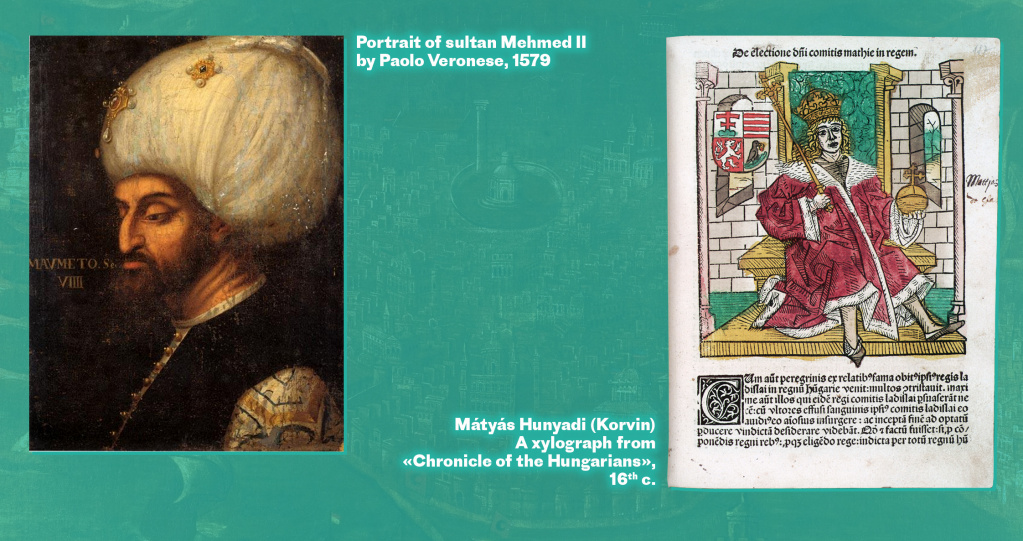
In 1526, Hungary suffered a crushing defeat from the Turks in the Battle of Mohács, and a large part of its territory went to the Ottoman Empire.
A Genoese Mernavino wrote in 1573 that Christians had no right to take part in public administration, carry arms, be joyful and have fun, dance, and had to humbly tolerate insults from the Turks. For showing disrespect to the Muslim religion they were punished by forced conversion to Islam or execution. Another part of the territories in West Hungary and Croatia fell under the rule of the Habsburgs. It was precisely the lands inhabited by the Serbs and Croats, where in 1578 the Military Frontier (or Vojna Krajina) was established to fight off the Ottomans.
A fierce and bloody war broke out on the Balkans again. It was led by the Holy League against Turkey and lasted from 1683 to 1699. In 1687, Emperor Leopold I sent a letter of appeal to the Patriarch of Constantinople calling him to a joint struggle against the Muslim Crescent. Many Serbs responded to the Emperor’s call. Some joined the Austrian army as volunteers; others took part in the revolts against the Turks. In 1690, the resettlement of the Serbian population to the territory of the Austrian Empire took place. This is how hieromonk Cyril (Hopovec) described that occurrence: The entire land of the Serbs ran to Buda including the Patriarch of Serbia, all hierarchs, monks and laymen - all Christian people. Patriarch Arsenije III Crnojević was at the head of this multitude of people leading them forward, like Moses ahead of Israel through the Red See.
As a sign of gratitude to the Serbs, Leopold I granted them a number of significant privileges, including the guarantee of the freedom of the Orthodox faith. Moreover, the metropolitans of Karlovci were not only the spiritual leaders, but also represented the Serbian people in the secular affairs of the empire.
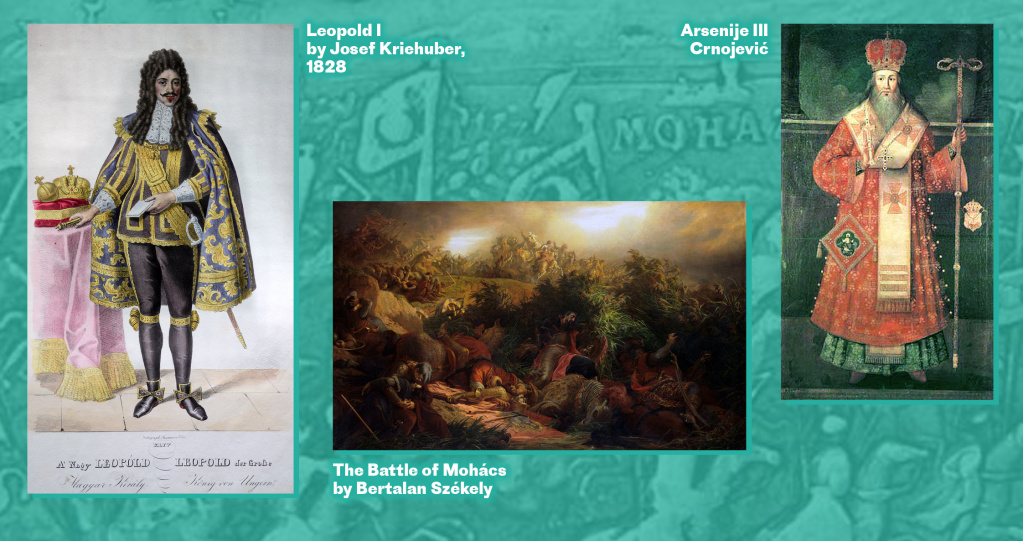
According to the Peace Treaty of Karlowitz signed on January 26, 1699 and ending the war, Porta lost its territories in Slavonija, Srem, Bačka and a part of Dalmatia. To run the affairs of thus joined lands a special court commission was set up, whose powers with time were extending more and more. So, shortly after the death of Arsenije III Crnojević, Vienna forbade the Serbs to elect a new patriarch and from that time on the Orthodox Church was to be headed by a metropolitan or archbishop. In addition to that, the Serbs began to experience all kinds of religious oppression, and the policy of the union was pursued more intensively. In 1744 Orthodox missionary St. Visarion Saraj was tortured to death in an Austrian prison. He had fought against the spread of the union in Banat and Transylvania and had not renounced the true faith even under torture.
The persecutions were especially severe on the territory of modern Croatia, where Orthodox monasteries and churches were closed and Uniate priests were appointed to the Serbian parishes. A number of revolts broke out in the defense of Orthodoxy as a result. Mikhail P. Bestuzhev-Ryumin, a Russian diplomat, describing the persecutions against the Orthodox in Austrian territories, wrote that those rejecting the union were threatened not only with the confiscation of all property, but also with the execution together with their wives and children. The plight of the Marča monastery was the most glaring. The brethren were driven out from its territory by the force of arms, the Orthodox priests were threatened, but the local Serbs resisted by fighting for this Orthodox monastery. However, the authorities ultimately closed it and had its buildings dismantled for building material.
In the middle of the 18th century, because of religious and other persecutions, a great number of the Serbs migrated to Russia, to the so-called New Serbia (Yekaterinoslav province). Under these circumstances, Vienna had to make some concessions. Thus, in 1781, Joseph II issued the Patent of Toleration which provided equality for all religions on the territory of the empire, though not lifted some of the restrictions regarding religious activity of the time of Maria Theresia. At the end of 18th century, the first Serbian school was opened in Croatia. That was also the time when most of the Orthodox churches and seminaries were constructed there, and the “Good Pastor” magazine began to come out.
In May1848, Sremski Kalovci hosted an assembly of Serbs – Majska Skupština – which declared the formation of the Serbian Vojvodina (Srem, Baranja, Bačka and Banat), but it was short-lived. In 1867 the empire was transformed into Austria-Hungary. After that, in 1868, Croatia received autonomy comprising a part of the Military Frontier within the Kingdom of Hungary. The Croats also confirmed their right to use the Cyrillic alphabet and secured the ecclesiastical autonomy. At the same time the Hungarians put up all sorts of obstacles for the life of the Orthodox. For example, the manager of the local school in the town of Nova Gradiška forbade the Orthodox teacher of Catechism to sign certificates in Cyrillic, while in Gospić it was demanded that Catechism be taught in Hungarian.
Following the Eastern Crisis and liberation of the Orthodox people of the Balkans from the Ottoman yoke thanks to the power of Russian weapons, the up-keeping of the Military Frontier was unnecessary, and on July 15, 1881 it was finally abolished.
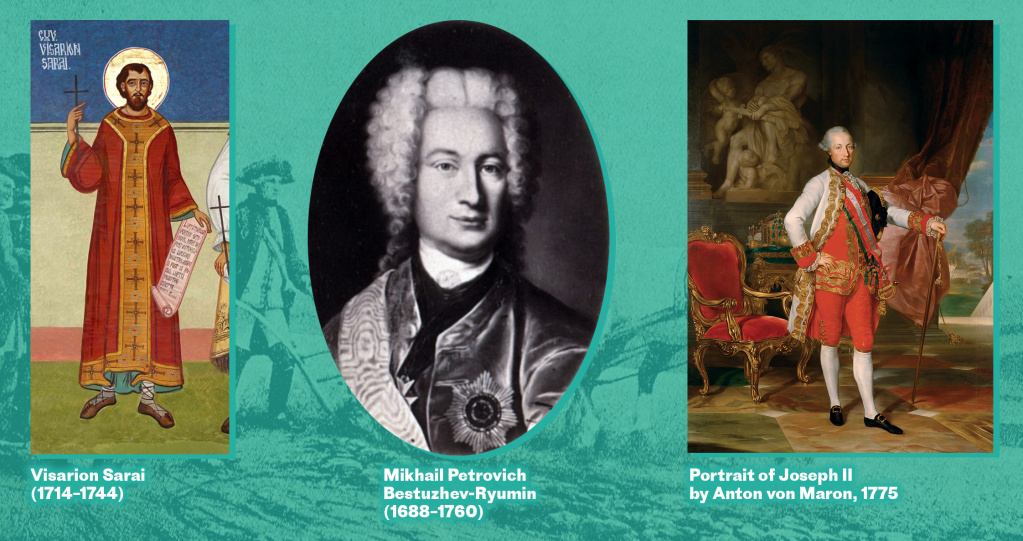
According to the census of 1910, the Orthodox Serbs on the territory of Croatia numbered about 650 thousand, and in Dalmatia they made up about 105 thousand. After the attempt on the life of the heir to the Throne Franz Ferdinand in Sarajevo in 1914 by Serb Gavrilo Princip, a wave of demonstrations and anti-Serbian pogroms accompanied by desecration of churches and cemeteries swept across the empire. During the Fist World War, Austria-Hungary continued its repressive policy against the Serbs and even opened concentration camps. After Vienna’s defeat and the victory of Serbian weapons, the establishment of the Kingdom of Serbs, Croats and Slovenes was proclaimed on December 1, 1918, and on September 2, 1920, in Sremski Karlovci, the spiritual center of the Orthodox Serbs at the time of Austria-Hungary, the reunification of the Serbian Orthodox Church and restoration of the Patriarchate were solemnly declared.
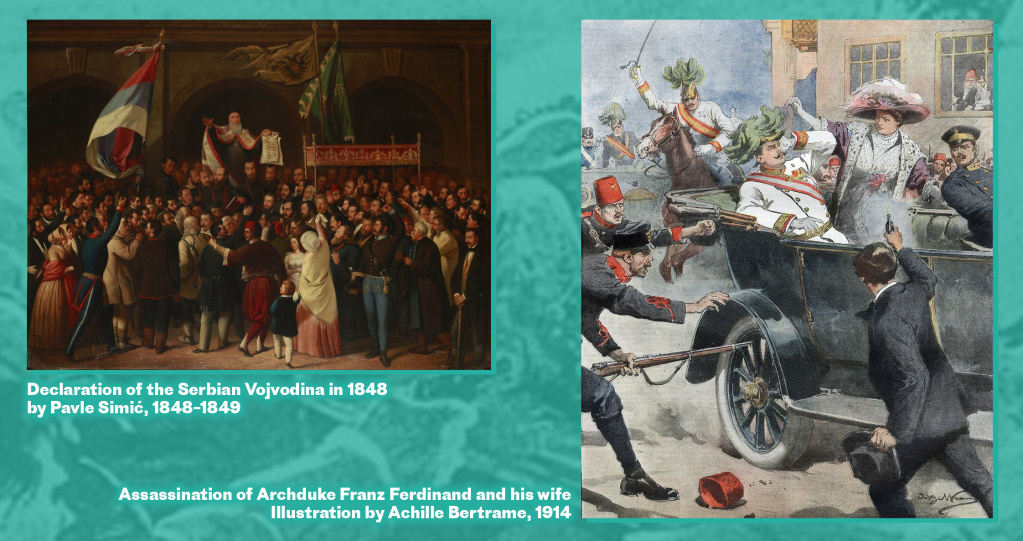
The relations between the Serbs and Croats remained extremely tense during the existence of the Kingdom of Serbs, Croats and Slovenes and later in Yugoslavia (since 1929), because the new state was unitary in character, which did not suit the Croatian population. In addition, the Vatican was playing an active role in the inter-ethnic hostility. The purpose of the so-called Catholic Action that was being carried out by the Vatican was to involve young people in various religious organizations, such as the” Eagles” or “Crusaders,” and to continue the policy of catholicization of the Serbs and Bosnians.
During the Second World War II Yugoslavia was among the targets of the military aggression by the Axis countries. The reason was the large-scale protests of the Serbian population that blazed up on March 27, 1941, because the leadership of Yugoslavia joined the Berlin pact. Bishop Atanasije (Jevtić) described these events as follows: “The Kosovo characterization had an impact on the resettlement under the Turks, on the standing up for Orthodoxy under the Turkish and Austrian powers, on the hopeless at the first glance Karadjordjević’s feat to revive Serbia, on the Albania’s Golgotha of the Serbs and even in a way on March 27 when the Serbs decided: better to die than become a slave.
The Independent State of Croatia was proclaimed in Zagreb in 1941, but de facto the power was amassed by the followers of the Ustaše movement and their leader Ante Pavelić. On April 10, 1941, they arrested Metropolitan Dositej (Vasić) of Zagreb who endured unbearable suffering. On the night of May 6, Bishop Platon (Jovanović) of Banja Luka was brutally murdered. These punitive actions were followed by the full-scale terror against the Orthodox Serbs on the territory of Croatia. The rights of Jews, Roma and Serbs were limited. They were obliged to wear sewings on their clothes (the letter O for Serbs, i.e. Orthodox). On June 3, all Orthodox schools and kindergartens were closed. Active policy of catholicization was pursued. For the undesirables the new regime built a machine of mass slaughter – deportation and concentration camps, including the most infamous Jasenovac.
Church buildings were destroyed or desecrated, monasteries were desolated. In 1942, the Ustaše regime established the uncanonical Orthodox Church of Croatia in order to sow discord within the Orthodox. But terror only urged the population on the fight against the Ustašes and occupants. The struggle was waged with different intensity. Croatia was proclaimed the state of the “Croatian and Serbian” people in the Constitution of 1947. The new authorities tried to pursue the policy of ‘failure to mention.’ According to the census of 1948, there were 543,795 Serbs living in the Republic. The church life in Croatia was reviving little by little, though the new Communist authorities obstructed the process. The Serbian Orthodox Church had suffered great losses even after the war.
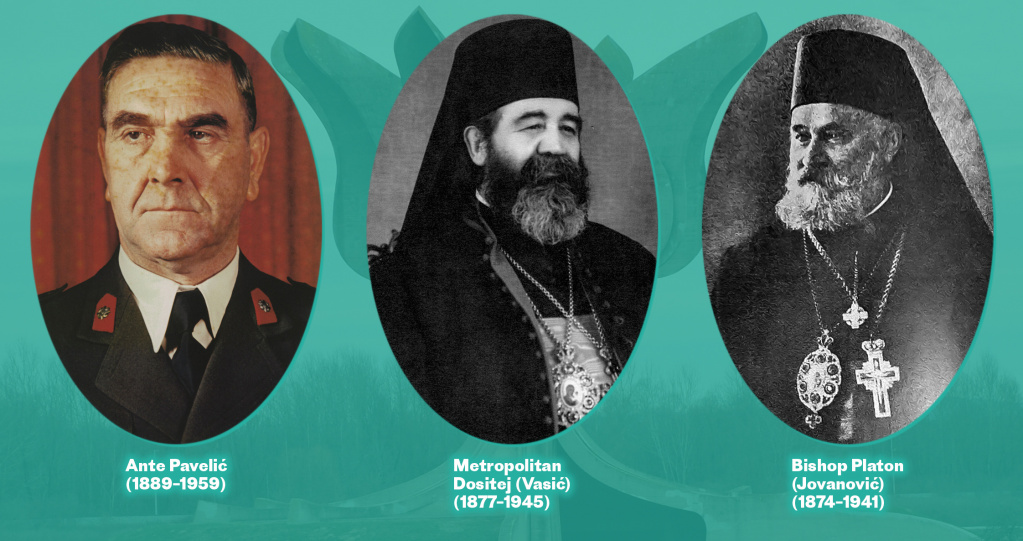
After the death of Josip Broz Tito in 1980, the nationalistic sentiments swept through entire Yugoslavia. The country was steady approaching the breakup. After the first multi-party elections, the new authorities initiated a policy aimed at secession from the Socialist Federal Republic of Yugoslavia. On June 25, 1991, Croatia declared its independence. Responding to the decision of Zagreb, the local Serbs proclaimed the establishment of the Republic of Serbian Krajina and announced their intention to remain within Yugoslavia. There were 580,000 Serbs (12, 2% of the total population) living on the 32% of the territory of Croatia. Soon a ruthless interethnic conflict broke up that was getting religious character as during the Second World War. Several hundred Orthodox church buildings were partly or completely destroyed. In December 1991, the Croats severely damaged the Cathedral of St. Nicholas in Karlovci, and destroyed it almost completely in 1993. The Cathedral was restored in 2007. On April 11, 1992, the building of the Zagreb-Ljubljana metropolia that housed a library and a museum was blown up in Zagreb. Serbian clergymen were persecuted everywhere.
After the Croatian military operations ‘Lightning” and “Storm’ (May and August of 1995 respectively), the Republic of Serbian Krajina ceased to exist. Hundreds of Serbs were killed, tens of thousands fled from Croatia. According to international data, 380,000 Serbs left Croatia in the period from 1991 to 2011. Church buildings were destroyed, cemeteries were desecrated, the Serbs, including clergymen, left the country. There were no priests at all in the diocese of Dalmatia after operation ‘Storm.’
It was only in the early 21st century that the plight of the Serbian population began to improve. The Serbian Orthodox Church is playing a great part in this process. An agreement between the government of Croatia and the Serbian Orthodox Church was reached in 2002. Orthodox priests now have the right to teach religious subjects in schools. Clergymen are returning, the destroyed church buildings are being restored. According to the last census, there are 186,633 Serbs in Croatia. On July 1, 2013, Croatia became a member of the European Union. This has entailed certain obligations to defend the rights of the national minorities. Yet, attacks on the clergymen and objects of the Serbian Orthodox Church continue.
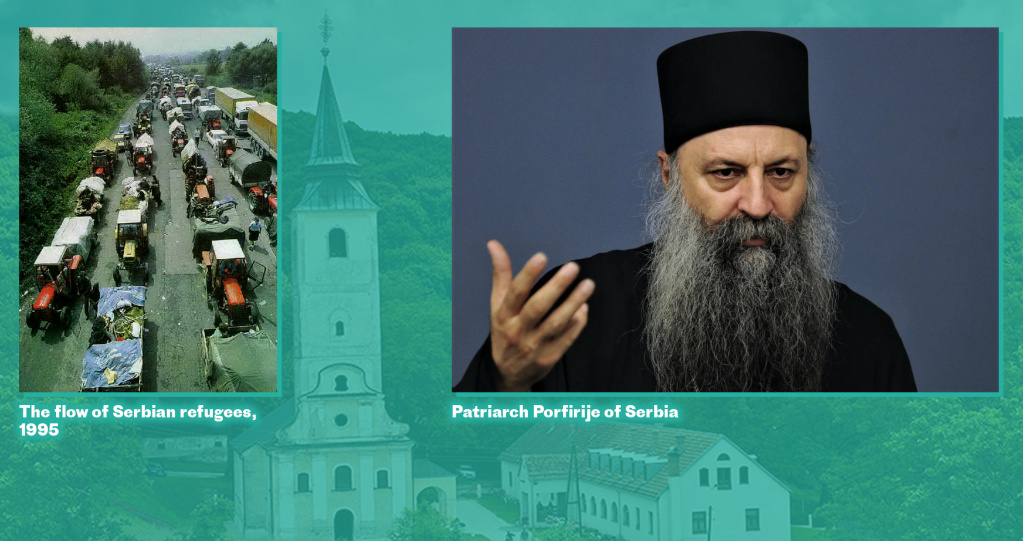
In 2014 the Episcopal Council of the Serbian Orthodox Church elected a vicar bishop of the Bačka diocese Porfirije as Metropolitan of Zagreb-Ljubljana. He was enthroned by Patriarch Irinej of Serbia in the presence of many hierarchs of the Serbian Orthodox Church at the Cathedral of the Transfiguration of the Lord in Zagreb on June 13, 2014. Metropolitan Porfirije has become far-famed for his public and peace activities aimed at the strengthening of Orthodoxy in the region. During his tenure of office, the renovation of the Lepavina monastery, the oldest spiritual centre of the Orthodox Serbs in Croatia, was completed.
On February 18, 2021, the Episcopal Council of the Serbian Orthodox Church elected Metropolitan Porfirije Serbian Patriarch.
